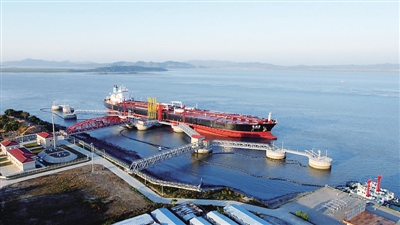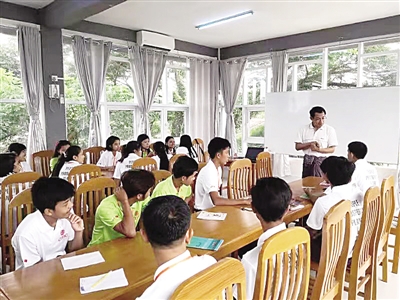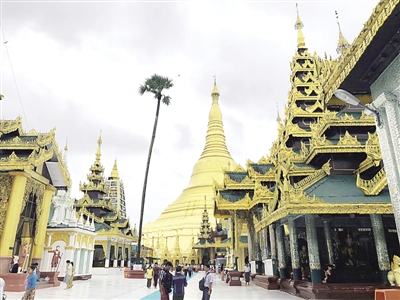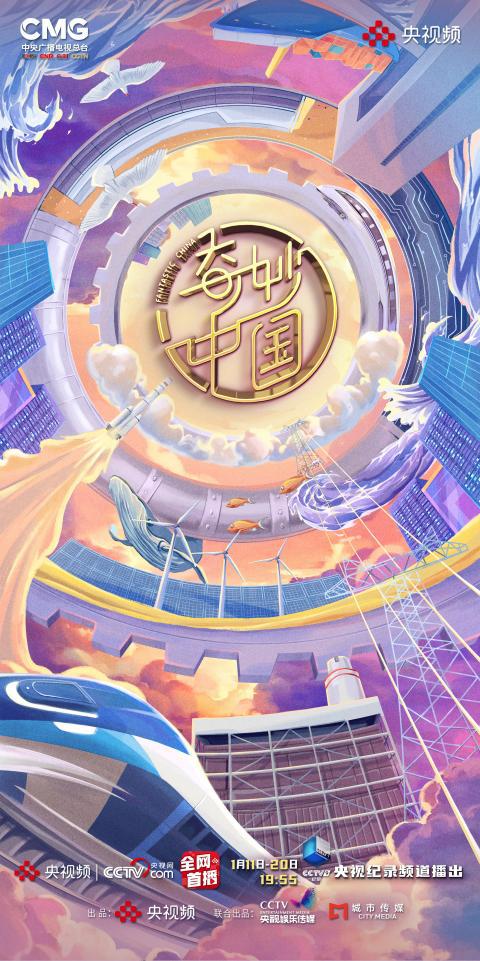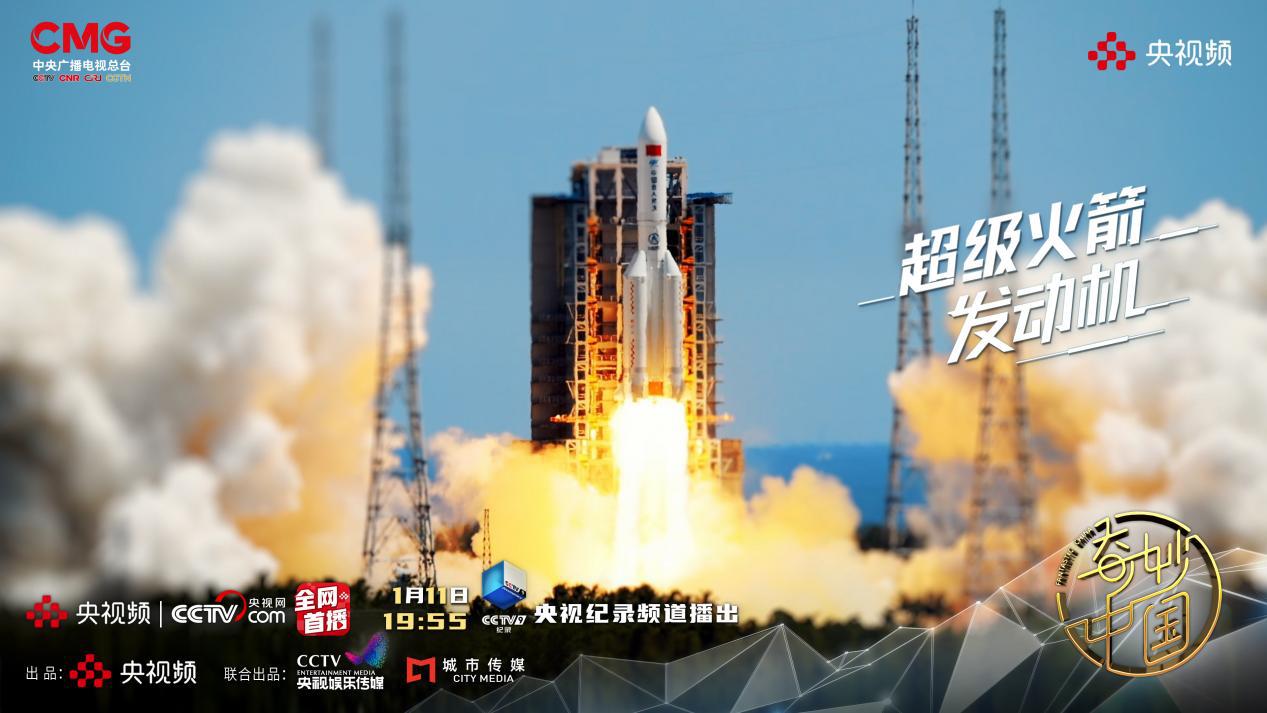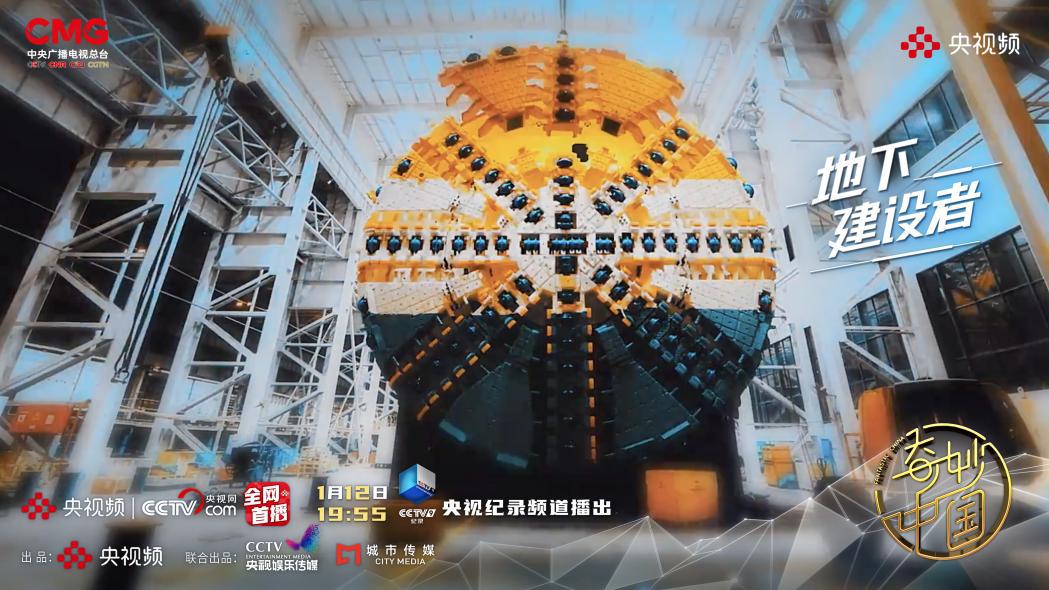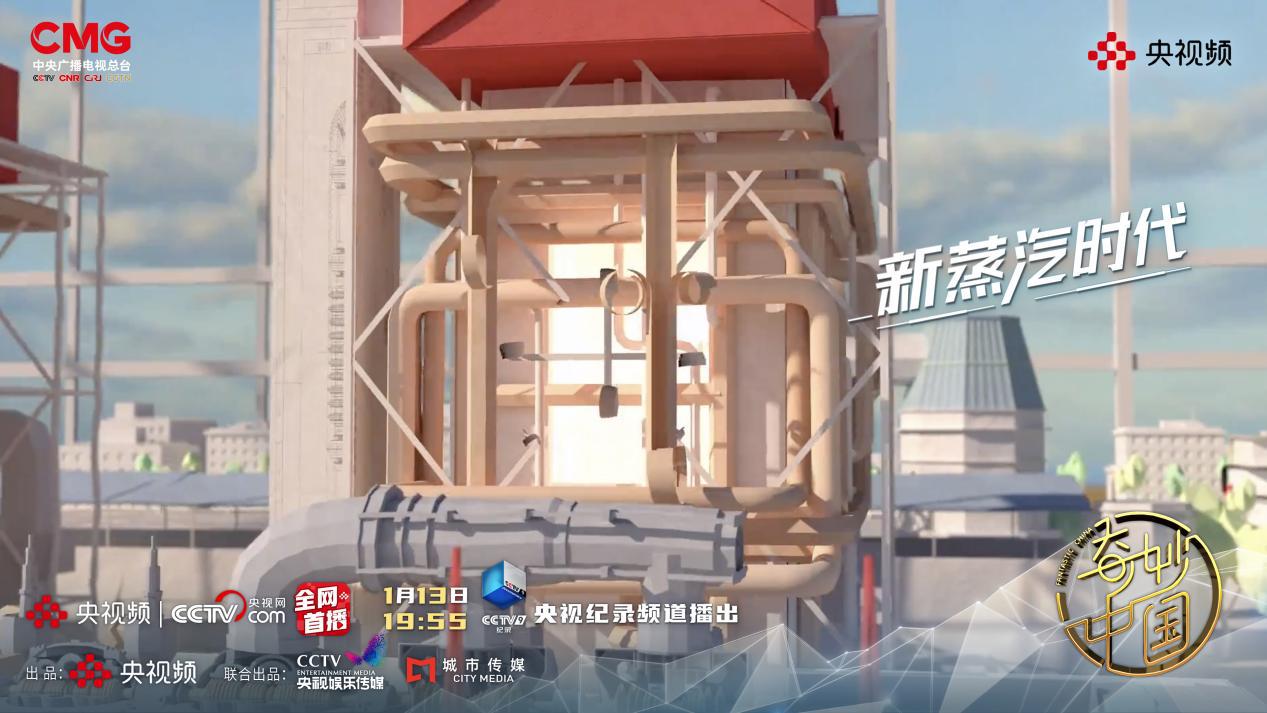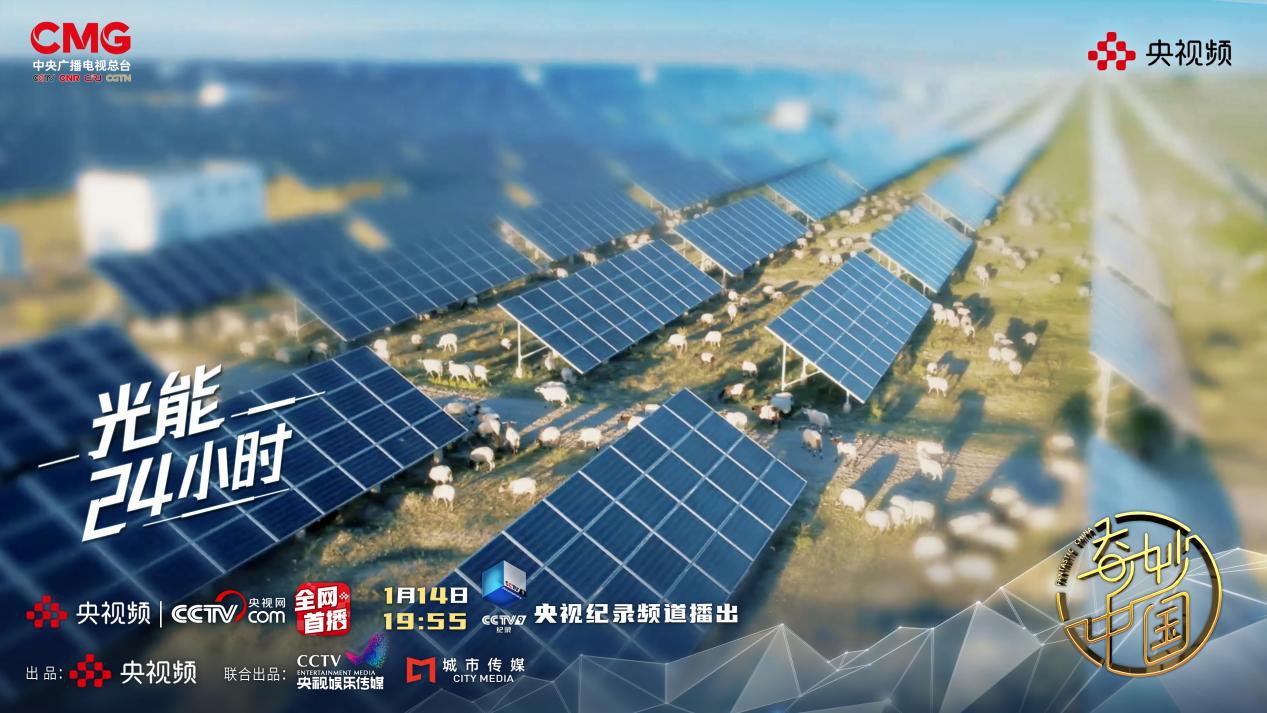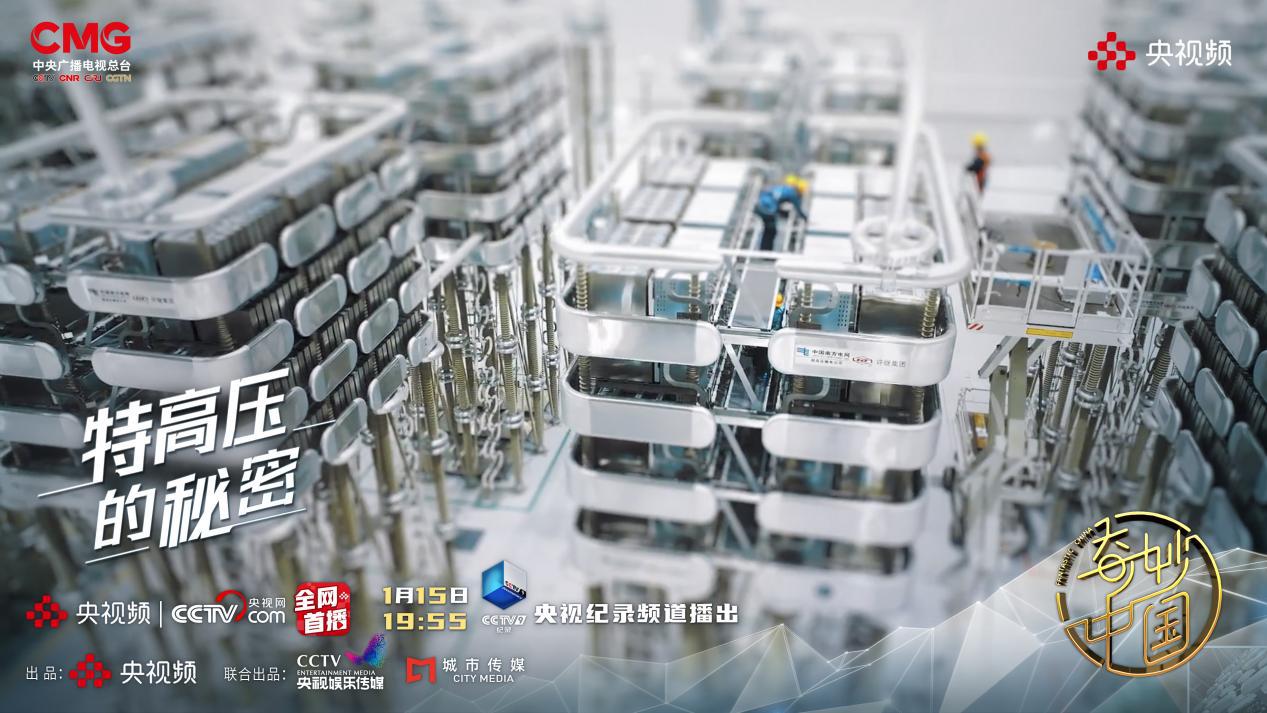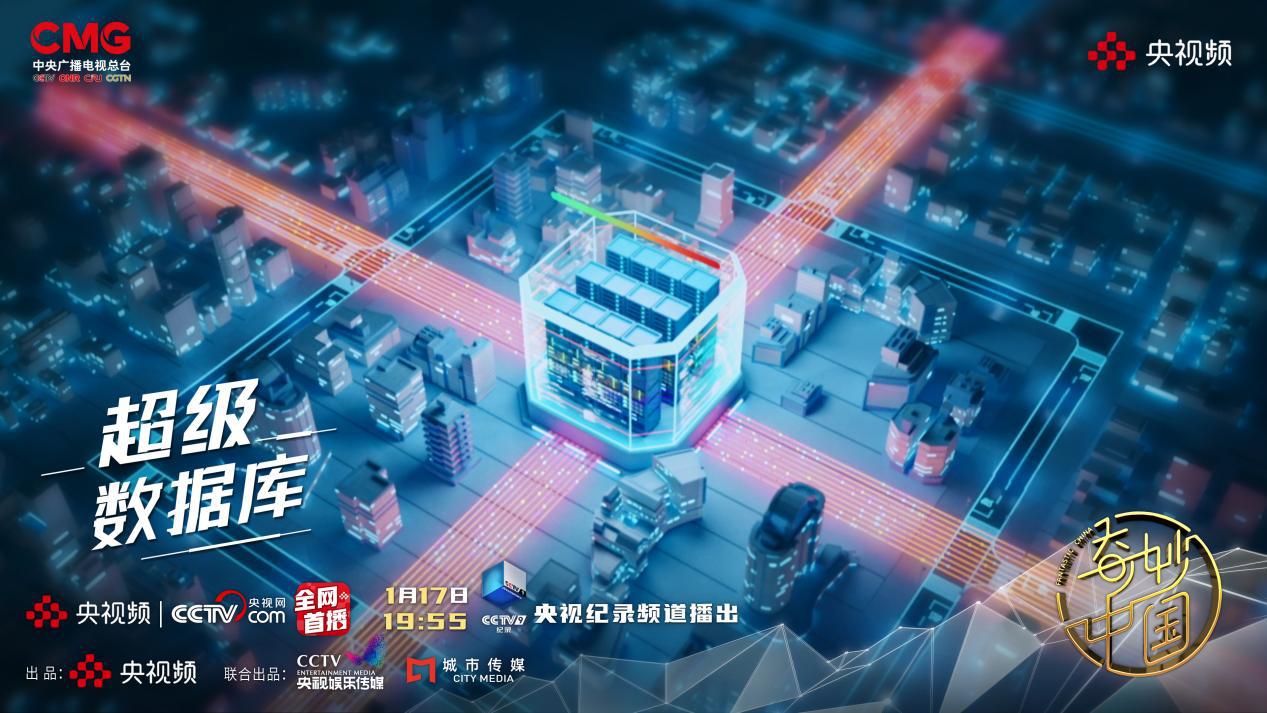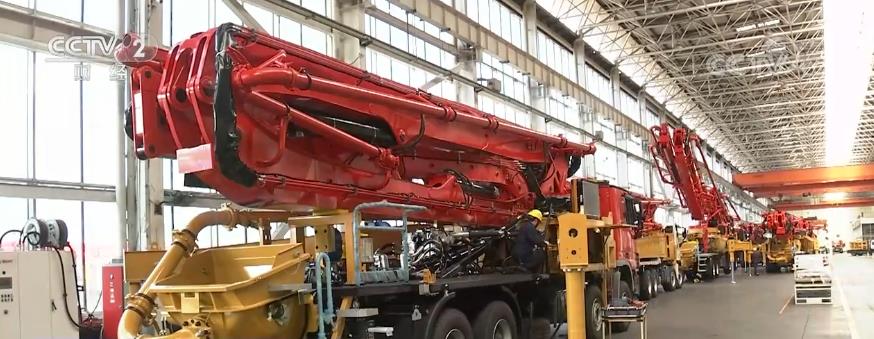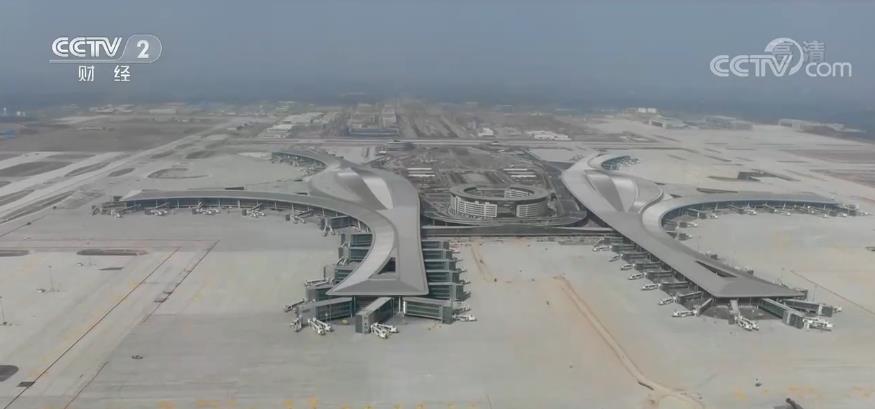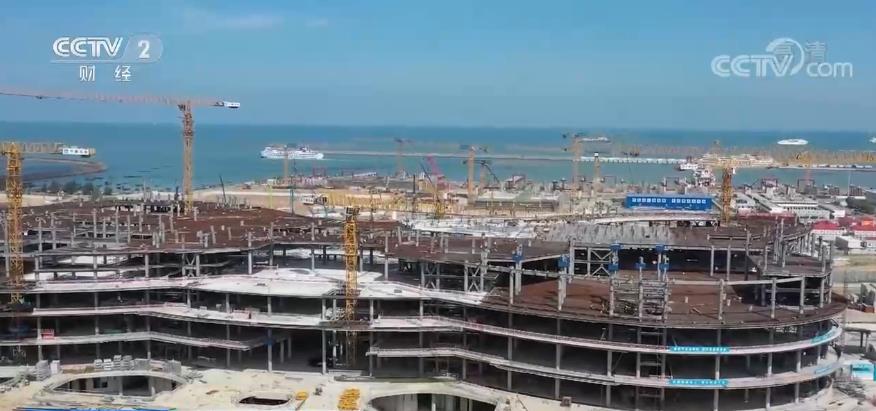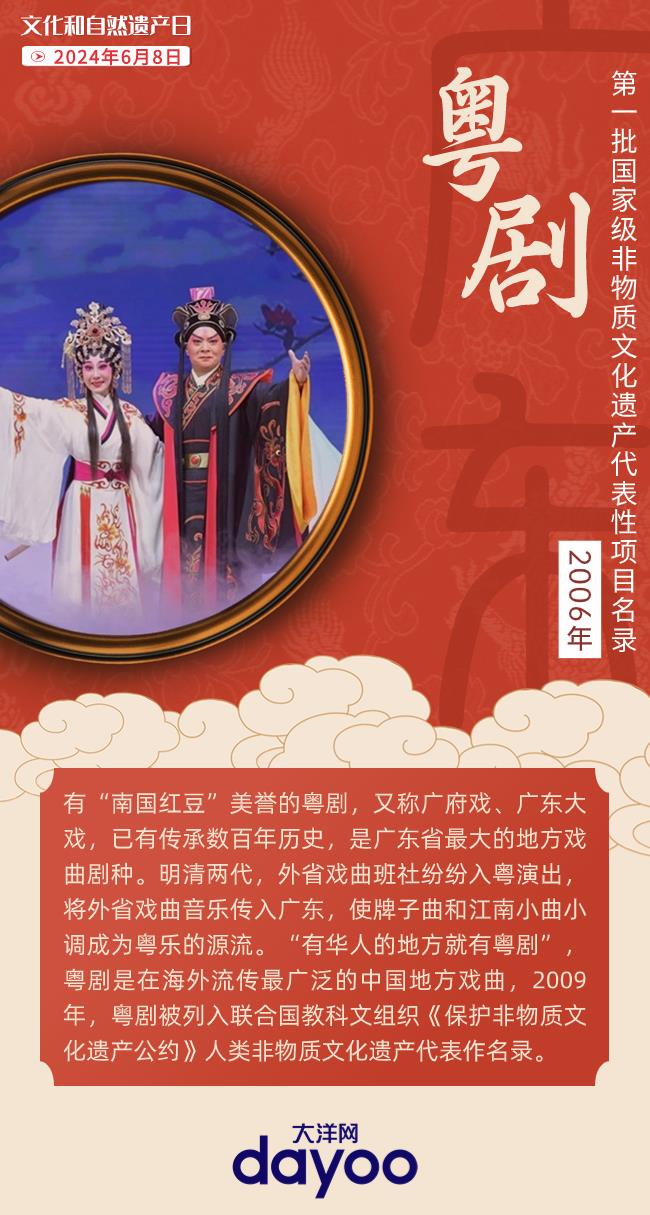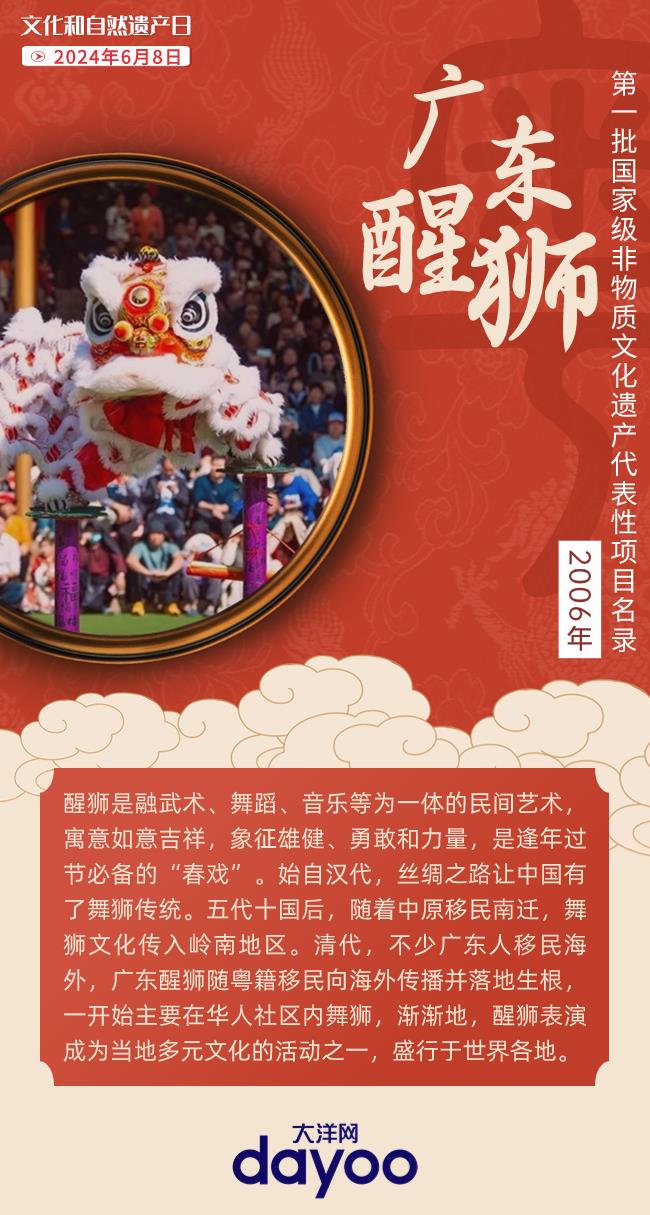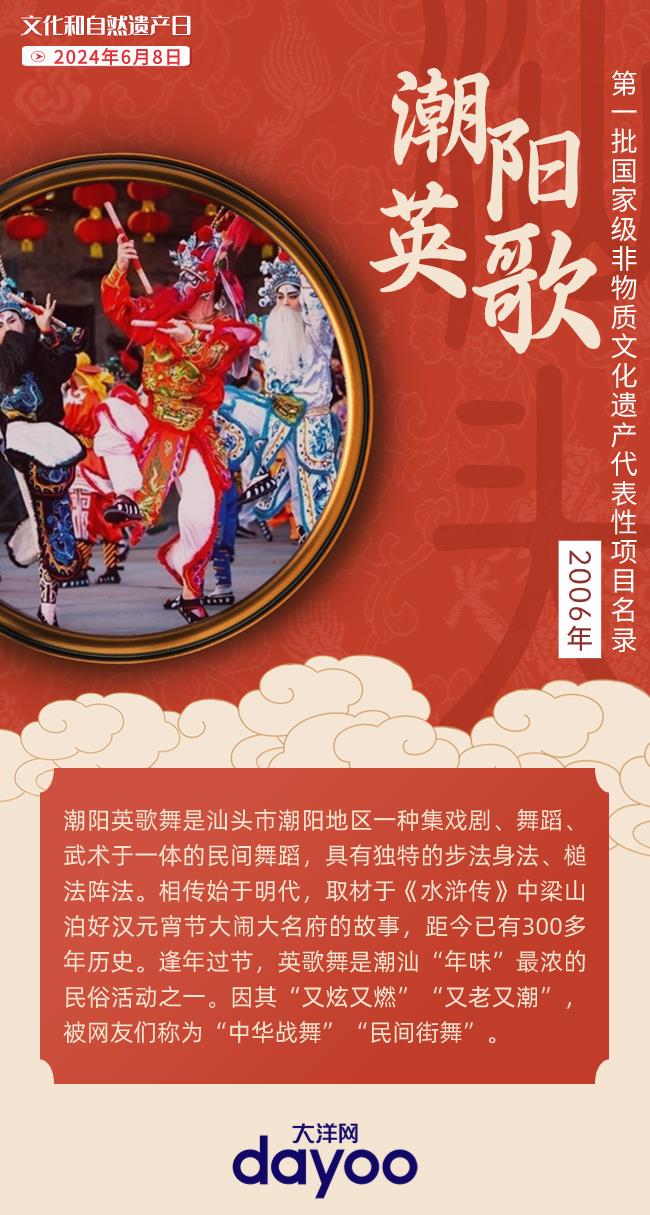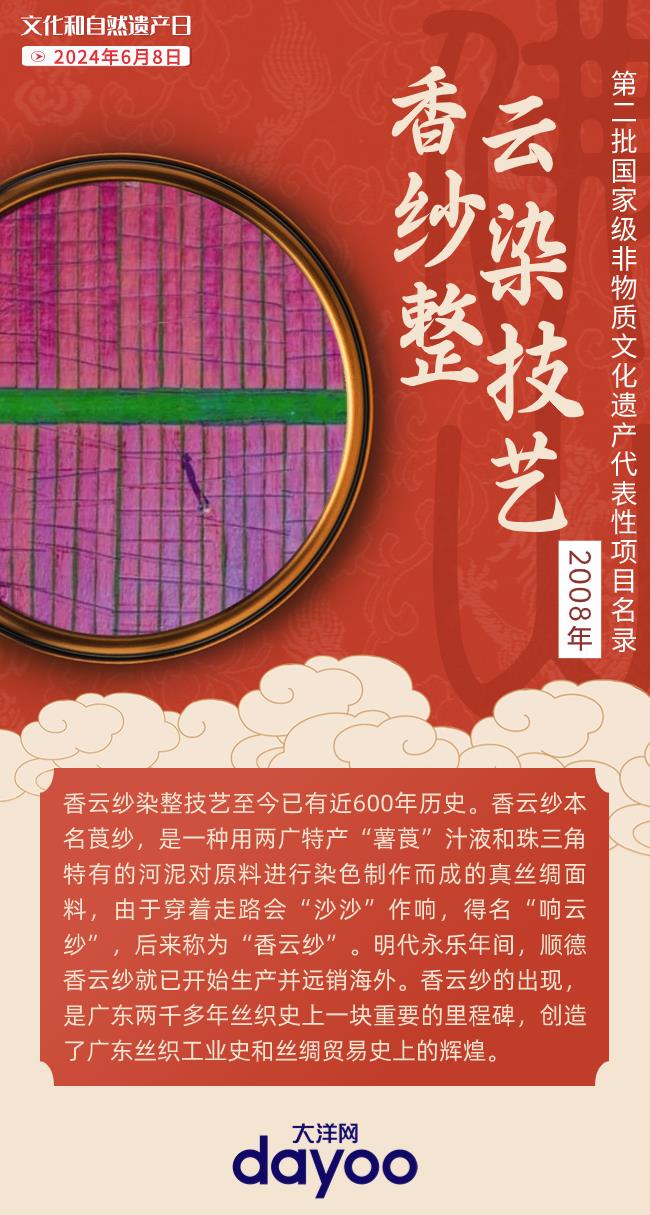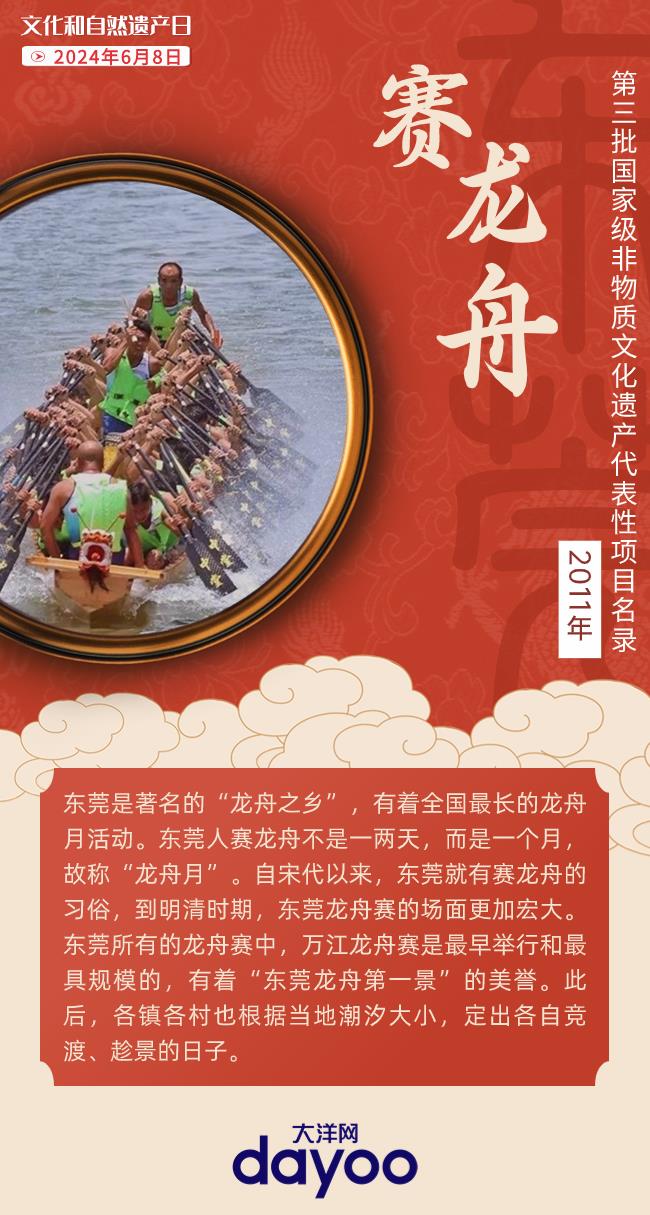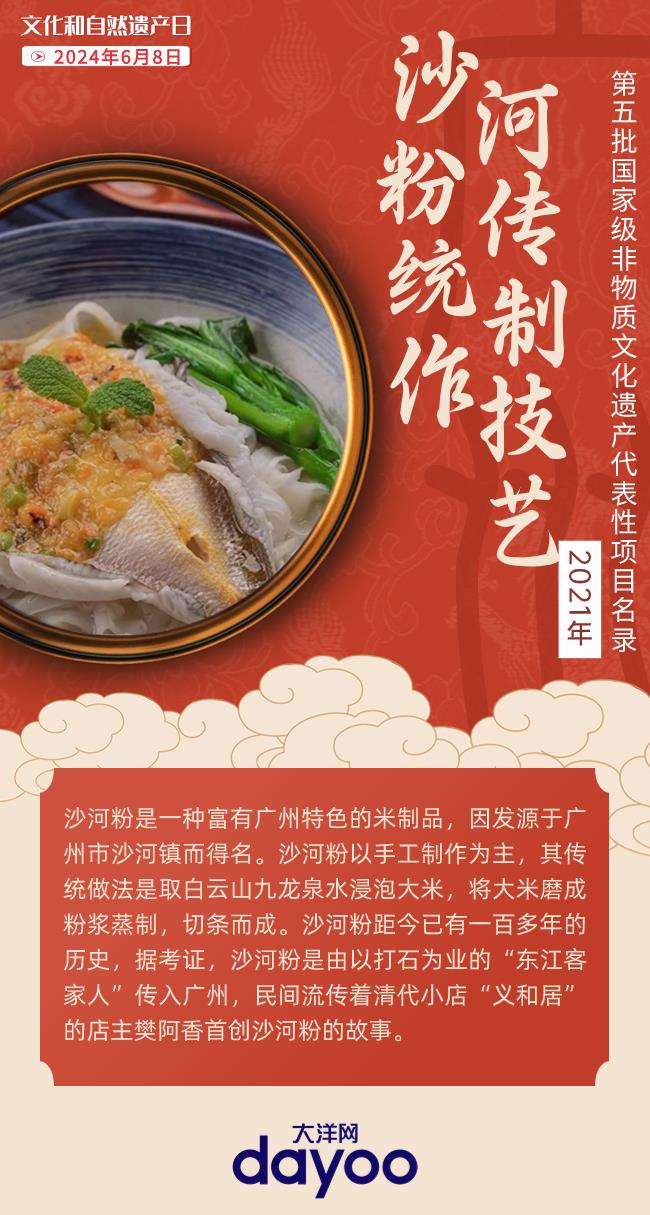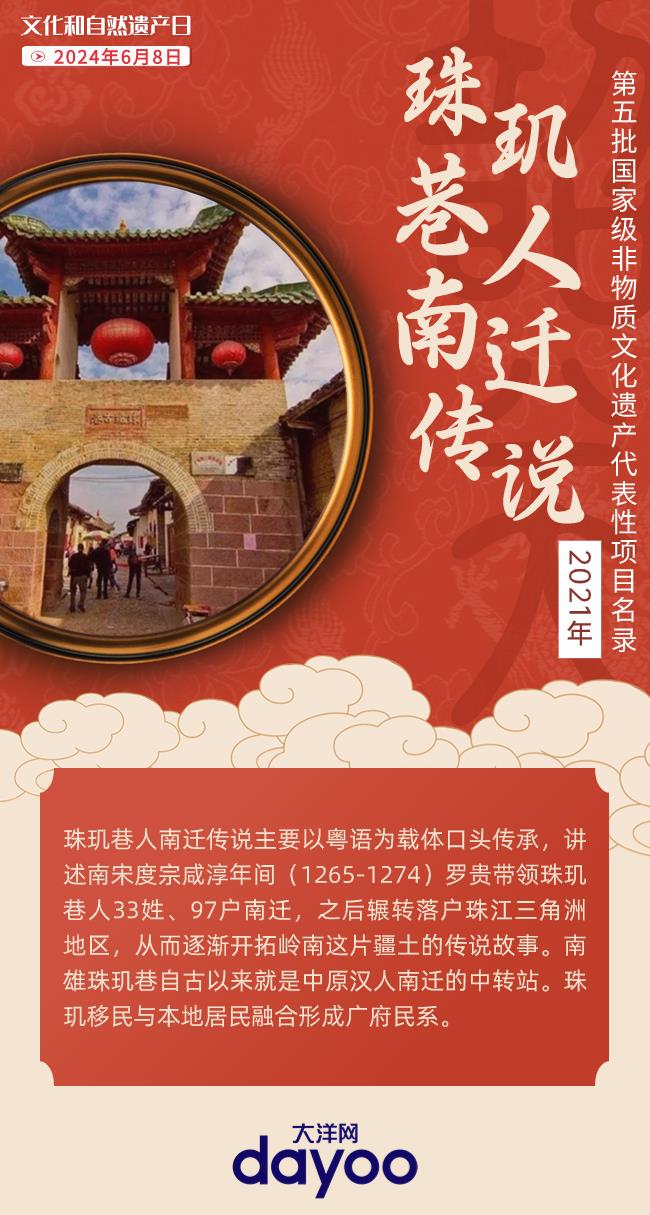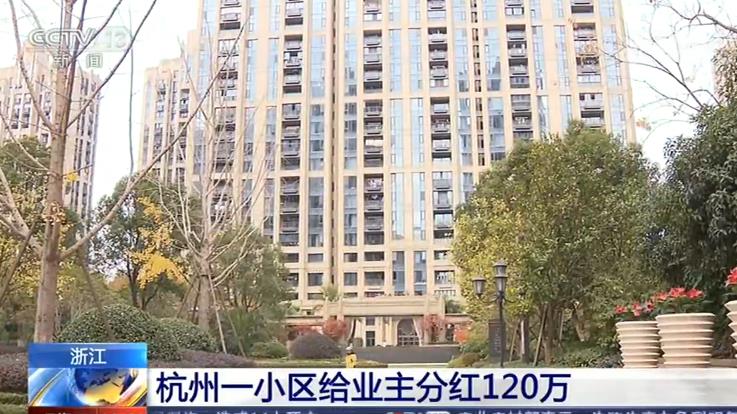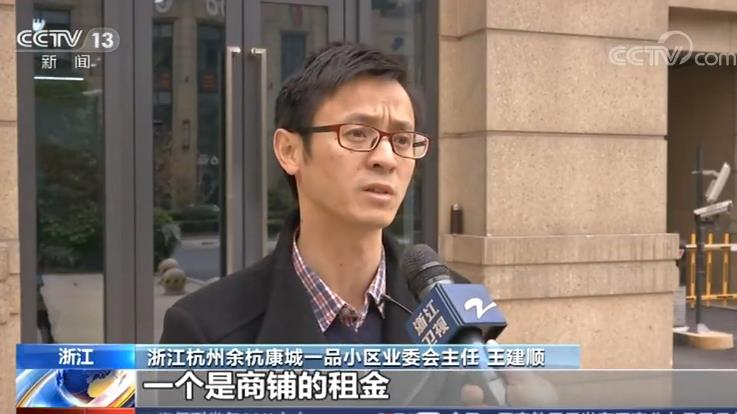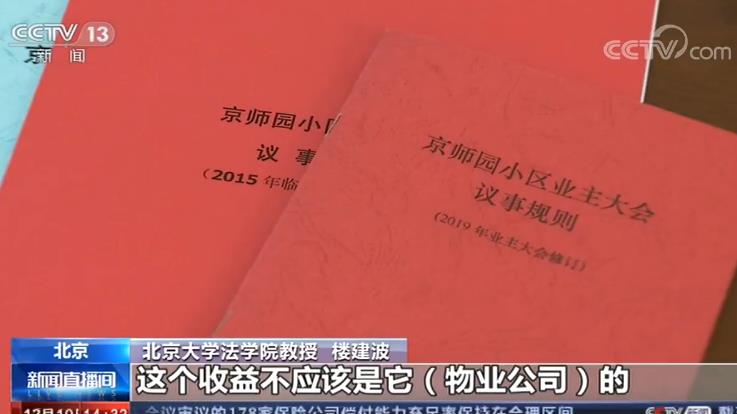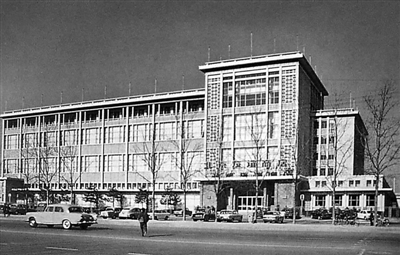
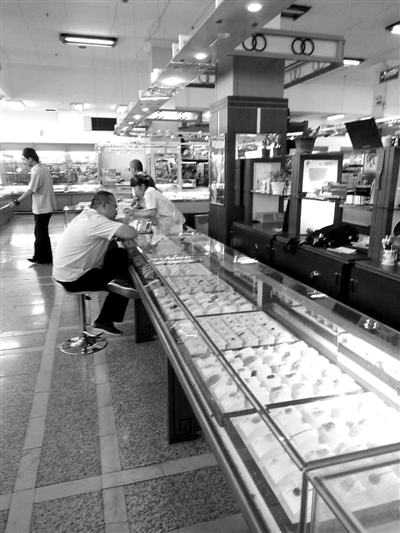
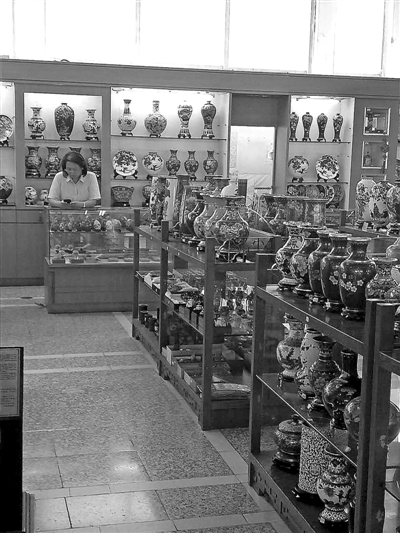
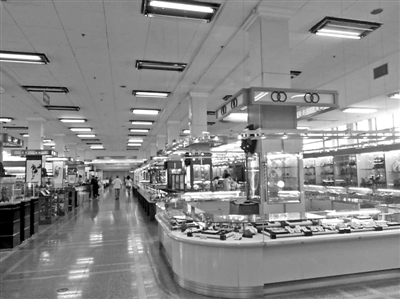
With the impact of e-commerce, once-famous physical department stores are looking for a way out. However, along the Chang ‘an Avenue in Beijing, there is a shop like a "cultural relic" that has rarely changed for decades. This is Beijing Friendship Store, once one of the earliest foreign-related stores in China, and the first large-scale foreign-related store in New China to provide services for resident foreign guests and tourism teams.
Nowadays, under the irradiation of rows of incandescent lamps, the three-story jewelry, jade and antique objects in Friendship Store have been displayed in glass counters for years, and it is difficult to find a customer in the huge shopping mall for a whole half day. Salespeople chat casually or play with mobile phones to kill time. Rumors about the renovation of Friendship Store have been full of twists and turns. In 2007, Stanley Ho, the richest man in Macau, announced that he would invest 4 billion yuan to completely renovate it, but the project renovation ended in vain. With the website of the Municipal Planning Commission publishing the review opinions on the design scheme of Friendship Building this year, this landmark building is expected to undergo major surgery again.
There was no customer tag in the store for a long time, and the yellow incandescent lamp was broken by one third.
On the afternoon of a working day, when I walked into the Friendship Store from the busy Chang ‘an Avenue, I felt a sense of crossing. At the jewelry counter on the first floor, three salespeople wearing light blue shirts and uniforms were guarding the empty store, and only one customer and salespeople were chatting about their family. Take a straight ladder from the store to the fourth floor, where fine calligraphy and painting and silk carpets are mainly sold, and only one salesman is seen on the whole floor. During the four-hour stay in the Friendship Store, the Beijing Youth Daily reporter visited this floor twice, and no customer met in the empty store.
The traditional Chinese painting hanging on the wall is a bit dusty, and the price ranges from 1,000 yuan to several thousand yuan. As for when it was last sold, the salesman would not disclose it. If you want to inquire about the operation of the Friendship Store in recent years, the salesperson only said, "You should ask our leader and listen to the grievances of the underlings, which is useless."
The third floor of Friendship Store mainly deals in jewelry, jade carving, gold and silver products, lacquered products, cloisonne and Four Treasures of the Study. It is not difficult to find that the teapot on the shelf is covered with a layer of ash, and the price tag of the jade pendant jade bracelet in the counter has turned yellow. Due to the large business area on this floor, there are many counters and even no salespeople on duty. If consumers just hang out, salespeople will not take the initiative to strike up a conversation. If you want to see any goods, you can call the salesman for help.
The reporter of Beiqing Daily noticed that the incandescent lamp tube at the top of this store floor was broken by at least one third, and the salespeople used the electroplated folding chairs of the last century. From the point of view of the quantity and category of goods, the third floor can be regarded as the main floor of the Friendship Store. There are six or seven salespeople here, which is much more than other floors. However, due to the scarcity of customers, salespeople either chat or play mobile phones to kill time.
The earliest foreign-related shops in China walked down the altar with opening to the outside world.
However, this fossil-like store, which was noble and brilliant in the past, is the common memory of old Beijingers.
As early as May 1951, when the new China was founded, the Central Ministry of Trade established high-end consumer goods stores in five cities, namely, Beijing, Tianjin, Shanghai, Guangzhou and Shenyang, to provide special supplies of scarce, tight and high-quality goods for the heads. The Friendship Store is the most unique, mainly serving foreign visitors.
In 1964, Beijing Friendship Store opened at No.25 Donghuamen Street. At that time, the slogan of the Friendship Store was: "We want the best goods in the market; We must have the goods that are lacking in the market; We have to have what is fashionable in foreign countries! "
As one of the earliest foreign-related stores in China, it is the first large-scale foreign-related store in New China to provide services for resident foreign guests and tourism teams. At that time, the service objects here were once limited to foreign-related personnel (including seafarers, tourists, diplomats, international students, etc.), overseas Chinese and senior cadres in People’s Republic of China (PRC); The goods sold are imported and specially supplied; Settlement methods are foreign exchange and various exchange certificates; Waiters are required to speak foreign languages, especially English and Japanese.
If someone can buy such tight products as TV sets, watches, whisky and Coca-Cola from the friendship store with a mysterious foreign exchange certificate, it is also the capital that people showed off at that time. For the leaders of various countries visiting China, visiting the friendship store is almost a "reserved track" for them to come to China.
Around the 1990s, after the use of foreign exchange certificates stopped, ordinary Chinese could finally enter the Friendship Store. According to the records, by 1991, China’s economic openness was greatly improved, and the Beijing Friendship Store seemed to be broken through the last line of defense overnight, completing the "complete opening" to Chinese.
However, with China’s economic opening to the outside world and a large number of foreign retail giants swarming in, friendship stores gradually lost their way in the tide of market economy. With the intensification of Beijing’s marketization process, department stores, hypermarkets and shopping centers have begun to rise. At the same time, with the continuous relaxation of domestic monetary policy, foreign customers can spend money through UnionPay cards and other means, and Beijing Friendship Store is no longer the only choice for foreign customers to shop.
The decline of friendship store and the prosperity of private enterprises in the same building
Opening to the outside world is not the inevitable fate of foreign-related shops going into decline. Although there are so many stores in Friendship Store, in the same building, the second-floor silk area rented by Friendship Store and the first-floor imported supermarket in the northeast corner are thriving. In 2014, they were subletted to a private silk enterprise and an imported food supermarket respectively.
The newly renovated second floor looks bright and fashionable, and customers are in an endless stream. Two or three shopping guides are busy greeting customers. According to one of the shopping guides, the sales in the silk area have been good, and they often don’t even have time to eat at noon when they are busy. Although there is not much publicity, there are both foreigners and many repeat customers who come here to shop. "Many foreigners come with silk. I don’t think they will go upstairs to buy things." The shopping guide said.
Similarly, the "Jenny Wang" supermarket on the first floor is frequented by foreigners and white-collar workers nearby. This supermarket chain is quite popular in Beijing. Because it is adjacent to office buildings, embassy districts and diplomatic apartments, it has been very popular since it entered the Friendship Store in 2014.
What makes different foreign trade enterprises in a building two worlds apart?
Zhang Yifeng (pseudonym), 40, came to the Friendship Store in the early 1990s. Two or three years after him, there were no new people in the store. As an old employee of the three-story jewelry diamond group, he can also feel the incompatibility between the friendship store and the market environment. As for the reason, his instinctive answer is: "Why hasn’t it changed in these years? You have to ask our leader."
In view of the present situation and future development plan of Friendship Store in recent years, the reporter of Beiqing Daily called the relevant person in charge of Friendship Store in general manager office, and got the reply that they didn’t know what was going on in the announcement posted by the Municipal Planning Commission, so they needed to ask for instructions from the leaders of Shoushang Co., Ltd. The head of the marketing department of Shoushang shares replied to the reporter of Beiqing Daily that the relevant leaders are on a business trip and need to wait until they return to Beijing to report in person.
conversation
"I haven’t been a newcomer for more than 20 years, and I have been waiting to retire."
Dialogue with Zhang Yifeng (pseudonym), counter salesperson of Friendship Store
Beiqing Daily: There are obviously more salespeople in the Friendship Store than customers. As a state-owned enterprise, do you have any task indicators? What’s the current situation of goods purchase?
Zhang Yifeng: It’s normal to have fewer people. There are sales tasks, but there is nothing you can do if you can’t finish them. The business market environment is like this, and it is not easy for all families to do it. Three or four years ago, the jewelry industry was not bad. Now, with the change of social environment, there are fewer people giving gifts, and the management mode of jewelry and jadeite has also changed to the private management mode of Wechat business and Studio. The impact from the market is certain.
A few years ago, I went on business trips two or three times a year and went to the south to attend the order fair, but I haven’t been out again in the past five years and I haven’t bought any new goods. Because our purchase procedures need to be approved at different levels, but the market purchase price was relatively high five years ago, and we didn’t dare to purchase at that time. These old models have been sold until now.
Some of the relationships between consignment and joint venture manufacturers are left over by my master’s generation. They started from the Friendship Store in those days, and now manufacturers will exchange goods from time to time, but it is not long before the latest designs are sent to the Friendship Store.
Beiqing Daily: Did you catch up with the glory of Friendship Store?
Zhang Yifeng: I came after graduating from technical secondary school in the early 1990s. At that time, the employment distribution was not very good, and I was assigned here because I studied hard. At that time, it was said to train talents for the transformation of friendship stores, but this training has been cultivated for more than 20 years.
My master retired early, and I can say that I caught up with the tail of the friendship store during its boom. When I first came here, I earned a little more money than outside, but many students who came in the same period left. By about 1993, there were no new people in the Friendship Store. In the past, there were more than 20 people in a commodity group, but later they left and retired. Now there are only more than 20 people in a department.
Beiqing Daily: Who are the customers of Friendship Store now?
Zhang Yifeng: Actually, there are friendship stores in every province and city, including Guangzhou and Shanghai. Each business model is different, but what they have in common is that they are not well developed. Now the Friendship Store in Beijing is a group of old customers in China, and few foreigners come. What we have here is genuine and the price is reasonable. There are a group of people who like to visit old brands regularly, but young people certainly don’t catch a cold. Generally, they turn around and leave.
At the beginning of the year, we also sold a large amount of four or five hundred thousand jewels and jade articles, and customers came to see them several times. Generally, we will serve such customers collectively, some are responsible for introducing, some are responsible for making lists and packaging, and some ask the leaders for discounts.
Beiqing Daily: In such a depressed working environment, are employees content with the status quo? What is your goal?
Zhang Yifeng: My goal is to wait for retirement. I have been struggling for so many years. In the past few years, some young people left their jobs and changed careers. Some people are developing well, but for me, they are just waiting for retirement. Maybe it is not easy to arrange after the transformation, and there are opportunities for retirement, so I will look at it then.
The salary paid by the company now is definitely not enough for the current price situation, but our colleagues don’t talk about money, no one talks about it, everyone talks about a variety of things, and some lesbians can talk about it.
progress
"Grow a Face" as the Friendship Building
Friendship Store, as a holding subsidiary of Xidan Shopping Mall Co., Ltd., has reversed the time to July 5, 2006, when Beijing Xidan Friendship Group signed a contract with Cuili International Co., Ltd., and the design drawings and models of the renovated Friendship Store were also released at the same time. Both parties will invest 4 billion yuan to rebuild the Friendship Store into another business building and facility cluster in CBD area. The boss of Cuili International is Stanley Ho, who is known as the "gambling king of Macau".
Liu Xiuling, then general manager of Beijing Xidan Friendship Group, introduced in an interview with the media that the reconstruction project of Friendship Store will be officially launched at the end of 2006 and is expected to be completed in the first half of 2009. "Xiyou Group is mainly responsible for the land used for this project, while Cuili Company is mainly responsible for the arrangement of construction funds for this project". Stanley Ho, Chairman of the Board of Directors of Cuili International Co., Ltd., said that the two partners will spend 4 billion yuan to build an Australian-designed comprehensive building integrating office buildings, apartments and large shopping malls on the original site of Friendship Store, in which the shopping mall occupies 8 floors (6 floors above ground and 2 floors underground) and the office building occupies 21 floors. The completed building will be jointly operated by both parties.
But this project has never been implemented. Beijing real estate industry has revealed to the media that the reason for the stagnation of the project is in the approval process. Some employees of PTW China, who participated in the design of the new Friendship Building, revealed that the project failed to start because of the contractual disputes between the partners. The friendship reconstruction project had another signing partner earlier, and the gambling king intervened before the contract ended. There are still some disputes between the two companies.
There are rumors in the industry that the loss of Friendship Store began in 2003, amounting to tens of millions. According to reports, Friendship Store hopes to attract more tourists by introducing "fresh blood", so it introduced Da Vinci Home in July 2010. An internal employee of the Friendship Store also confirmed that the project was indeed stranded because of a dispute and going to court. He revealed that the Friendship Store has been losing money year after year. Because many merchants are worried that the Friendship Store will be demolished at any time after signing the contract, they dare not sign a longer contract, which eventually leads to the shortage of goods in the Friendship Store, which seriously affects the existing operation.
In 2011, Beijing Shoushang Group Co., Ltd. was officially unveiled after the reorganization of Xidan Shopping Mall and Xinyansha Group. Before the reorganization, the old department stores such as Xidan Shopping Mall and Friendship Store owned by Xidan Shopping Mall Co., Ltd. were placed under the management of Shoushang Group.
The fate of Friendship Store is expected to change again. On July 23rd this year, the website of Beijing Municipal Planning Commission published the review opinions on the design scheme of Friendship Building project. The Beijing Friendship Store, which has only four floors, will change its face, and it will be upgraded to 11 floors. According to the design plan, Friendship Store will be built into Beijing Friendship Building, with a building height of 159.5 meters and a project valuation of 1.935 billion yuan. Its building functions include office, business and apartment, and it is a large-scale commercial facility along Chang ‘an Avenue. The construction period (planning) is from September 2016 to January 2019.
In March this year, the Beijing Municipal Development and Reform Commission issued a document saying that after research, it agreed that Beijing Friendship Real Estate Co., Ltd. would continue to develop and build the Beijing Friendship Building project. The total land area of the project is about 1.78 hectares, the building scale is 260,000 square meters, the building height is 159.5 meters, and the green space rate is 20%. The building functions include offices, businesses and apartments.
This information indicates that the Friendship Store is expected to change its face again. In the interview, the reporter of Beiqing Daily found that many internal employees of the Friendship Store did not know about this matter, while Zhang Yifeng revealed that some subtle changes could really be felt from the recent speech of the superior leaders. "Maybe it is really necessary to demolish and renovate this time!"
Wenhe photo/reporter Li Jia




